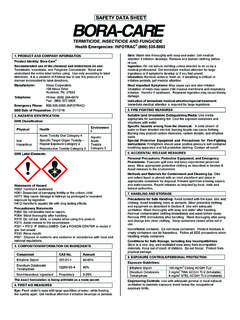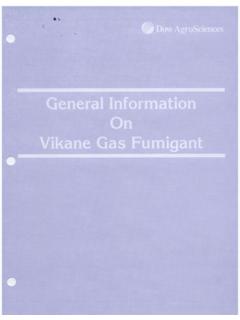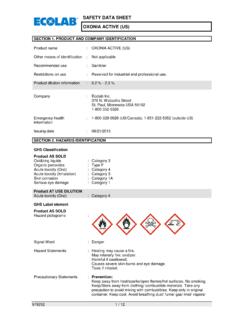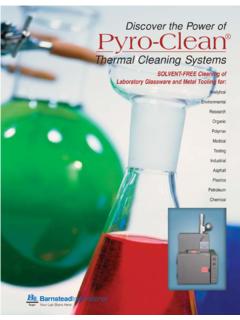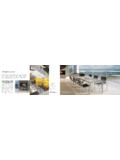Transcription of Safety Data Sheet TERMIDOR 9.1% SC. - …
1 Safety data Sheet TERMIDOR SC. Revision date : 2013/10/31 Page: 1/9 Version: (30357978/SDS_CPA_US/EN) 1. Product and Company Identification Company BASF CORPORATION 100 Park Avenue Florham Park, NJ 07932, USA 24 Hour Emergency Response Information CHEMTREC: 1-800-424-9300 BASF HOTLINE: 1-800-832-HELP (4357) Substance number: 000000256709 Molecular formula: C12 H4 Cl2 F6 N4 O S Chemical family: phenyl pyrazole Synonyms: fipronil 2. Hazards Identification Emergency overview CAUTION: HARMFUL IF SWALLOWED. HARMFUL IF ABSORBED THROUGH SKIN. HARMFUL IF INHALED. Causes eye irritation. Do not get in eyes, on skin, or on clothing. Do not breathe vapours/mists.
2 Wash thoroughly after handling. See Product Label for additional precautionary statements. State of matter: liquid Colour: beige Odour: characteristic Potential health effects Primary routes of exposure: Routes of entry for solids and liquids include eye and skin contact, ingestion and inhalation. Routes of entry for gases include inhalation and eye contact. Skin contact may be a route of entry for liquified gases. Acute toxicity: Slightly toxic after single ingestion. Slightly toxic after short-term skin contact. Slightly toxic after short-term inhalation. Irritation / corrosion: May cause slight irritation to the skin. May cause moderate but temporary irritation to the eyes.
3 Sensitization: Safety data Sheet TERMIDOR SC. Revision date : 2013/10/31 Page: 2/9 Version: (30357978/SDS_CPA_US/EN) Skin sensitizing effects were not observed in animal studies. Medical conditions aggravated by overexposure: Individuals with pre-existing diseases of the respiratory system, skin or eyes may have increased susceptibility to excessive exposures. Signs and symptoms of overexposure: CNS stimulation, tremors, convulsions All injection injuries must be treated as potential threats to the future viability of the hand, foot, or limb. Injection wounds containing dirt, leather, product or other infectious detritus should be considered dangerous to the viability of the hand, foot or limb.
4 Surgical exploration and debridement may be required. Potential environmental effects Aquatic toxicity: Very toxic (acute effect) to aquatic organisms. Terrestrial toxicity: With high probability not acutely harmful to terrestrial organisms. 3. Composition / Information on Ingredients CAS Number Content (W/W) Chemical name 120068-37-3 % fipronil 57-55-6 % Propylene glycol % Proprietary ingredients 4. First-Aid Measures General advice: First aid providers should wear personal protective equipment to prevent exposure. Remove contaminated clothing. Move person to fresh air. If person is not breathing, call 911 or ambulance, then give artificial respiration, preferably mouth-to-mouth if possible.
5 Call a poison control center or physician for treatment advice. Have the product container or label with you when calling a poison control center or doctor or going for treatment. If inhaled: Remove the affected individual into fresh air and keep the person calm. If on skin: Rinse skin immediately with plenty of water for 15 - 20 minutes. If in eyes: Hold eyes open and rinse slowly and gently with water for 15 to 20 minutes. Remove contact lenses, if present, after first 5 minutes, then continue rinsing. If swallowed: Never induce vomiting or give anything by mouth if the victim is unconscious or having convulsions. Do not induce vomiting. Have person sip a glass of water if able to swallow.
6 Note to physician Antidote: No known specific antidote. Treatment: Treat symptomatically. Anticonvulsant therapy as routinely administered to humans. Based on animal studies diazepam and phenobarbital prevented convulsions. Due to the slow elimination of the active compound and its metabolites, the treatment must be continued for several days, gradually decreasing the dose of anticonvulsant based on the clinical response. Safety data Sheet TERMIDOR SC. Revision date : 2013/10/31 Page: 3/9 Version: (30357978/SDS_CPA_US/EN) 5. Fire-Fighting Measures Flash point: > F Autoignition: Information applies to the solvent. not applicable Lower explosion limit: As a result of our experience with this product and our knowledge of its composition we do not expect any hazard as long as the product is used appropriately and in accordance with the intended use.
7 Upper explosion limit: As a result of our experience with this product and our knowledge of its composition we do not expect any hazard as long as the product is used appropriately and in accordance with the intended use. Self-ignition temperature: not self-igniting Suitable extinguishing media: foam, dry powder, carbon dioxide, water spray Hazards during fire-fighting: carbon monoxide, carbon dioxide, hydrogen fluoride, Hydrogen chloride, nitrogen oxides, sulfur oxides, acid halides If product is heated above decomposition temperature, toxic vapours will be released. The substances/groups of substances mentioned can be released if the product is involved in a fire.
8 Protective equipment for fire-fighting: Wear self-contained breathing apparatus and chemical-protective clothing. Further information: In case of fire and/or explosion do not breathe fumes. Keep containers cool by spraying with water if exposed to fire. Collect contaminated extinguishing water separately, do not allow to reach sewage or effluent systems. Dispose of fire debris and contaminated extinguishing water in accordance with official regulations. 6. Accidental release measures Personal precautions: Take appropriate protective measures. Clear area. Shut off source of leak only under safe conditions. Extinguish sources of ignition nearby and downwind. Ensure adequate ventilation.
9 Wear suitable personal protective clothing and equipment. Environmental precautions: Do not discharge into the subsoil/soil. Do not discharge into drains/surface waters/groundwater. Contain contaminated water/firefighting water. Cleanup: Dike spillage. Pick up with suitable absorbent material. Place into suitable containers for reuse or disposal in a licensed facility. Spilled substance/product should be recovered and applied according to label rates whenever possible. If application of spilled substance/product is not possible, then spills should be contained, solidified, and placed in suitable containers for disposal. After decontamination, spill area can be washed with water.
10 Collect wash water for approved disposal. 7. Handling and Storage Handling General advice: RECOMMENDATIONS ARE FOR MANUFACTURING, COMMERCIAL BLENDING, AND PACKAGING WORKERS. PESTICIDE APPLICATORS & WORKERS must refer to the Product Label and Directions for Use attached to the product for Agricultural Use Requirements in accordance with the EPA Worker Protection Safety data Sheet TERMIDOR SC. Revision date : 2013/10/31 Page: 4/9 Version: (30357978/SDS_CPA_US/EN) Standard 40 CFR part 170. Ensure adequate ventilation. Provide good ventilation of working area (local exhaust ventilation if necessary). Keep away from sources of ignition - No smoking. Keep container tightly sealed.


